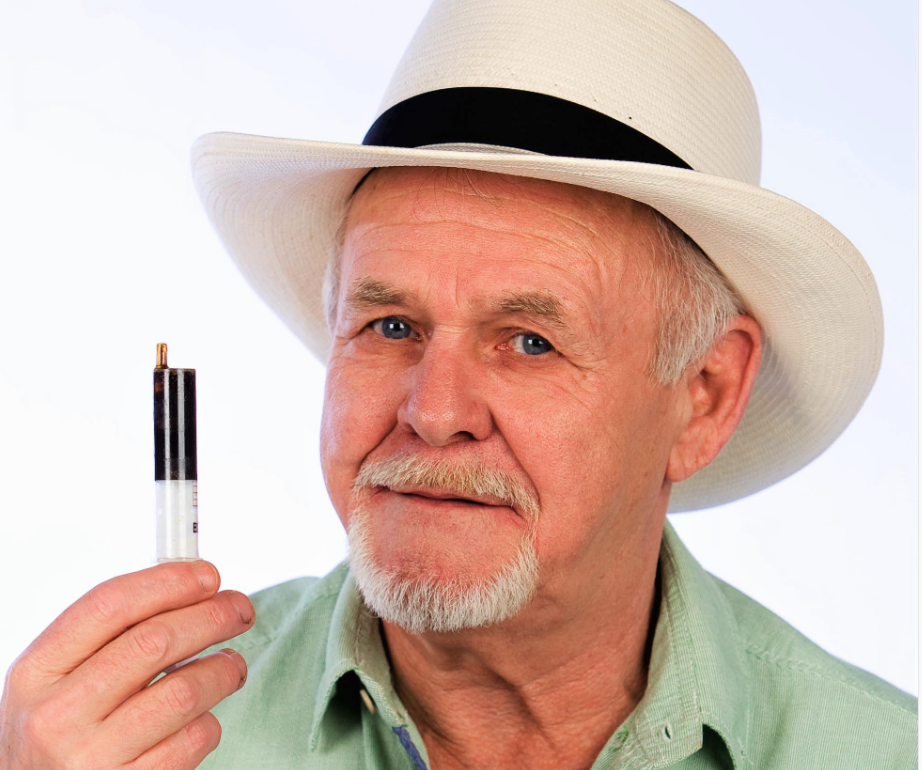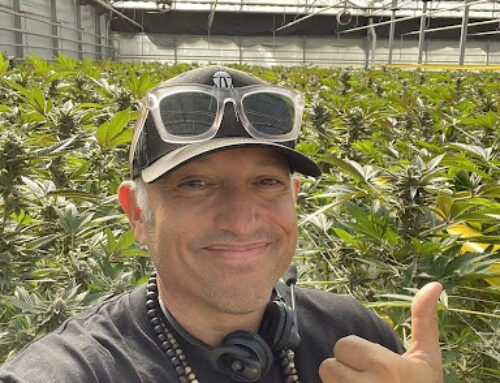Exploring Rick Simpson Oil: A Practical Perspective
LOS ANGELES-Many years ago, a family sought my assistance concerning a sibling diagnosed with prostate cancer. This brother staunchly rejected conventional treatments like chemotherapy, radiation, surgery, and injections. He believed, with unwavering determination, that a daily dose of one gram of Rick Simpson Oil (RSO) could eradicate his cancer within a mere 90 days. By orally or rectally ingesting this oil at a rate of 60 grams over three months, he held firm to the belief that he could completely rid his body of cancer. The family turned to me for validation of this claim.
Touched by their plight, I explained that this notion was, in reality, a myth. The dosage of one gram per day left several critical questions unanswered: Was it measured by molecular weight or volume? Whole plant extracts, my preferred method, contained a multitude of compounds beyond just THC, including cannabinoids, terpenes, flavonoids, and various other chemicals. Our average ethanol extract, for instance, registered at 750mg/g. Unfortunately, I couldn’t provide this oil, as RSO was exclusively produced using naphtha or butane at that time, chemicals I refused to work with. Additionally, the RSO protocol insisted on one gram of pure THC from an Indica plant. Was it truly advisable for patients to ingest 1000mg of THC in a single day? What about other crucial cannabinoids like CBD? The family expressed their gratitude for my insights and promised to reach out again if they had more questions or could persuade their brother to consider alternative approaches.
A couple of weeks later, the family contacted me again, this time requesting a direct conversation with their ailing brother. I agreed, and they scheduled a call, which included no fewer than six family members. It quickly became evident that the cancer-afflicted brother was unwilling to entertain any ideas or information that contradicted the one-gram-a-day myth. After considerable back-and-forth, I managed to convince him that a gram didn’t equate to 1000mg, as that would leave no room for anything else.
I urged him to consider other plant components with potential anti-tumoral properties. However, he insisted the extract must contain a minimum of 90% THC from Indica, dismissing the idea that Indica alone wouldn’t determine the medicine’s profile. He was unwavering in his belief that the entire extract should be composed solely of THC. I attempted to explain that the same effect could be achieved by consuming two extracts, each at 45%, effectively delivering the same 900mg dosage and retaining the benefits of the whole plant. He rebuffed this idea, adhering steadfastly to the protocol propagated by his Facebook group associates. Several months later, the family contacted me once more, this time to express their gratitude for my efforts and to inform me of their brother’s passing.
There is no miraculous solution for cancer treatment. To suggest that a single product can cure all 200-plus types of cancer, irrespective of cell types, stages, locations, concurrent treatments, or other health conditions, requires a level of naivety akin to other questionable beliefs in our society, such as ingesting bleach to cure COVID-19. While it is true that cannabinoid receptors exist in most cancers, their activation does not guarantee a favorable outcome.
The original Rick Simpson Oil, produced with naphtha and containing only THC, was both hazardous to manufacture and ingest. Rick claimed that consuming 60 grams in 90 days could cure ALL cancers, and if not, it implied the patient had not taken enough or the ‘right’ product. This early version lacked CBD, terpenes, or any other compounds beyond THC.

Image: Rick Simpson
As time progressed, research highlighted CBD’s potential to combat cancer cells, a fact Rick staunchly denied. He also asserted that hydrocarbons like butane and hexane were the only solvents suitable for oil extraction.
Over time, cancer patients began consuming oils (FECO) made from ethanol, CO2, and direct infusion into carrier oils like olive oil and MCT. Many achieved positive results without adhering to the protocol promoted by Rick. Patients experimented with various cannabinoid ratios, such as 1:1, 1:2, 1:4, and ongoing research continues to explore the cancer-fighting properties of other cannabinoids like CBG and terpenes such as limonene and bisabolol.
Simultaneously, more states legalized medical cannabis, leading to the emergence of online dispensaries with a wide range of products. Despite cannabis extracts having a history spanning over 10,000 years, the industry has struggled to reach a consensus on nomenclature. Terms like ‘full spectrum’ have evolved to include both THC and CBD, along with added terpenes. ‘Extracts’ encompass concentrates used for dabbing and vaporizing, often creating confusion when sold alongside edibles or smokable concentrates. To address this, manufacturers began using the label “RSO” to describe syringe-packaged concentrates, with its meaning limited to this context in contemporary times.
The potency of the extract holds no relevance to its effectiveness. For example, if your required dose is 100mg and the concentration is 70%, you would take 0.14 grams. With a concentration of 40%, you’d take 0.25 grams, and so on. These cannabinoids do not necessarily need to originate from a single extraction and can be combined to achieve the desired dosage.
I would be remiss if I didn’t include commentary on the infamous Grain of Rice, or GOR. Accurate measurements can be done in many ways. In the US, recipes include cups and ounces. Time uses seconds, minutes, and hours. Medicine uses the metric system indicating how many milligrams are in a given product regardless of the way it is delivered. A pill or capsule may be of varying size (volume), but the molecular content of the medicine is shown in milligrams.
With RSO, the instructions are to begin with a GOR. The first question I have is what type of rice? Are they referring to basmati, whole grain, sushi, instant, or some other variety? Should it be a long, medium, or short grain? The weight, width, and length are different, so is this about length, width, or weight? Are patients expected to weigh the extract to 1/64 (0.01562) of a gram? Measure the length of 1.963 millimeters? The suggestion is ludicrous, and the room for error is concerning with people often taking too much the first time, and sadly, determining that cannabis is not a viable option for them. To give context, a gram of extract containing 750mg of THC would deliver 11.72mg of THC. For the cannabis-naive, it is standard to begin at 2.5mg. In other words, less than 25% of the amount from a GOR.
For those navigating the often bewildering sea of conflicting information, please remember that, in 2023, ‘RSO’ is simply a term for syringe-packaged extracts. Manufacturers often share information from Rick Simpson websites that align with their products, but these do not constitute validated scientific studies.
For medical professionals to recommend RSO reveals a degree of negligence that does not serve their patients’ best interests. There are reputable educational platforms that can bolster confidence when advising patients.
Highly Capitalized would like to thank Mara Gordon for her insights and opinions in this article. Gordon is the Co-Founder of Aunt Zelda’s and Octopi Wellness, has developed cannabis treatment protocols for thousands of patients driven by science and data.Gordon, a process engineer, created software enabling her to take a detailed and scientific approach to plant medicine. With nearly 500,000 views of her TEDx talk, she is featured in Mary Janes: The Women of Weed, The Medicine in Marijuana and Weed the People. Photo below courtesy of the author.




































